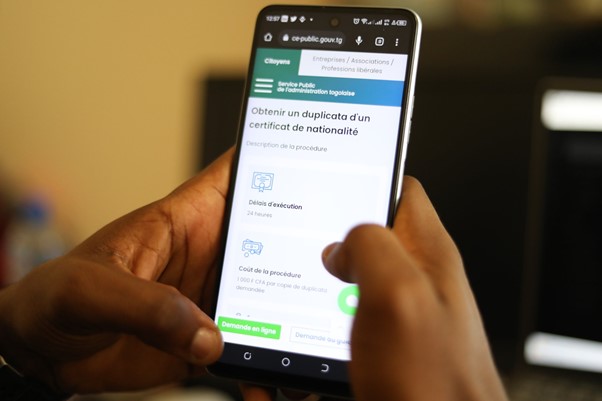Introduction
Inventory management is a critical aspect of any business, and maintaining optimal stock levels while minimizing waste is essential for operational efficiency and profitability. Traditionally, inventory management has been a manual and time-consuming process, prone to human error and often leading to stockouts or excess inventory. In this article, we will explore how smart contracts can optimize stock levels, revolutionizing inventory management processes. If you are planning to trade Bitcoin, you may consider using a reliable trading platform like immediate-coraldex.org.
Benefits of Smart Contracts in Inventory Management
Smart contracts, self-executing agreements with predefined rules written into code, offer several advantages when applied to inventory management:
Increased efficiency and accuracy
Smart contracts automate various inventory-related tasks, such as order processing, replenishment, and data recording. This automation reduces manual errors and speeds up processes, resulting in improved efficiency and accuracy.
Enhanced transparency and traceability
With smart contracts, every transaction and update to the inventory is recorded on a blockchain, providing an immutable audit trail. This transparency and traceability help in identifying the movement of goods, preventing fraud, and ensuring compliance.
Automated stock level optimization
Smart contracts can continuously monitor inventory levels in real-time by integrating with Internet of Things (IoT) devices such as sensors and RFID tags. This allows for automatic adjustments to stock levels based on demand, preventing stockouts or overstock situations.
Waste reduction and cost savings
By optimizing stock levels and preventing excess inventory, smart contracts help reduce waste and associated costs. They enable businesses to order goods based on actual demand, minimizing the risk of products expiring or becoming obsolete.
How Smart Contracts Work in Real-Time Inventory Management
To understand how smart contracts enable real-time inventory management, it’s important to grasp the underlying mechanisms. Smart contracts in this context typically involve the following steps:
- Integration with Internet of Things (IoT) devices: Smart contracts are integrated with IoT devices such as sensors, RFID tags, and connected devices to gather real-time data on inventory levels, temperature, location, and other relevant parameters.
- Data collection and monitoring: The IoT devices collect and transmit data to the blockchain, where it is stored securely. This data includes information about inventory levels, stock movement, environmental conditions, and other relevant metrics. The data is continuously monitored and updated in real-time.
- Decision-making algorithms and triggers: Smart contracts utilize decision-making algorithms based on predefined rules and triggers. These algorithms analyze the real-time data collected from the IoT devices and make automated decisions regarding stock replenishment, order fulfillment, and other inventory-related actions.
Optimizing Stock Levels with Smart Contracts
Here are some ways smart contracts help optimize stock levels:
1. Demand forecasting and predictive analytics: Smart contracts can analyze historical data, market trends, and customer behavior to forecast demand accurately. This enables businesses to anticipate future demand and adjust their stock levels accordingly, minimizing the risk of stockouts or excess inventory.
2. Automatic reorder points and replenishment: Smart contracts can automatically set reorder points based on demand forecasts and trigger replenishment orders when inventory levels fall below the predefined thresholds. This ensures timely replenishment without manual intervention, reducing the chances of stockouts.
3. Dynamic pricing strategies: Smart contracts can integrate with pricing algorithms and adjust prices dynamically based on demand and supply conditions. This helps optimize stock levels by incentivizing customers to purchase products when inventory levels are high or adjusting prices to match demand during peak periods.
Future Trends and Opportunities
The application of smart contracts in real-time inventory management is continually evolving. Here are some future trends and opportunities to watch out for:
1. Blockchain technology advancements: As blockchain technology continues to evolve, it offers improved scalability, security, and interoperability. Advancements in blockchain will further enhance the capabilities of smart contracts in inventory management, enabling seamless integration with other systems and increased efficiency.
2. AI-powered smart contracts: The integration of artificial intelligence (AI) with smart contracts can bring advanced predictive analytics, machine learning algorithms, and automation capabilities to inventory management. AI-powered smart contracts can learn from historical data, identify patterns, and make intelligent decisions regarding stock levels and replenishment.
3. Collaboration and interoperability: The future of smart contracts lies in their ability to collaborate and interoperate across different platforms and networks. Interconnected smart contracts can facilitate seamless inventory management across supply chains, enabling real-time coordination and visibility among multiple stakeholders.
Conclusion
Smart contracts have the potential to revolutionize inventory management by optimizing stock levels and reducing waste. Through their automation capabilities, real-time data integration, and decision-making algorithms, smart contracts enable businesses to achieve greater efficiency, accuracy, and cost savings in their inventory management processes. However, challenges related to security, integration, and compliance must be addressed for successful implementation.



